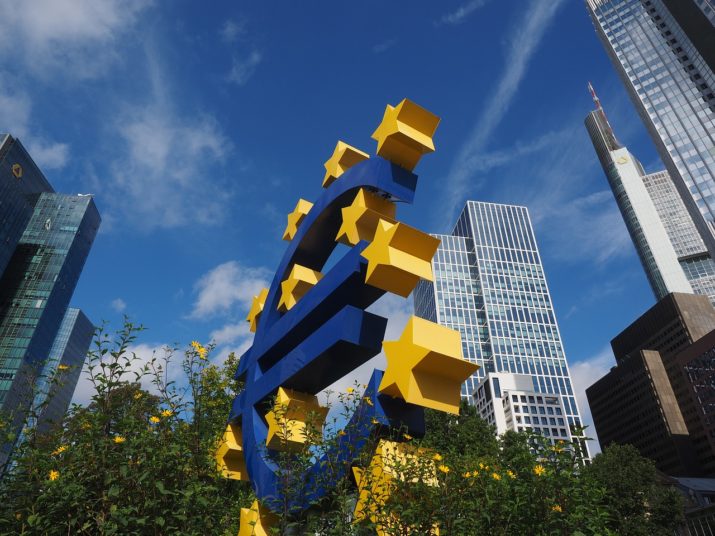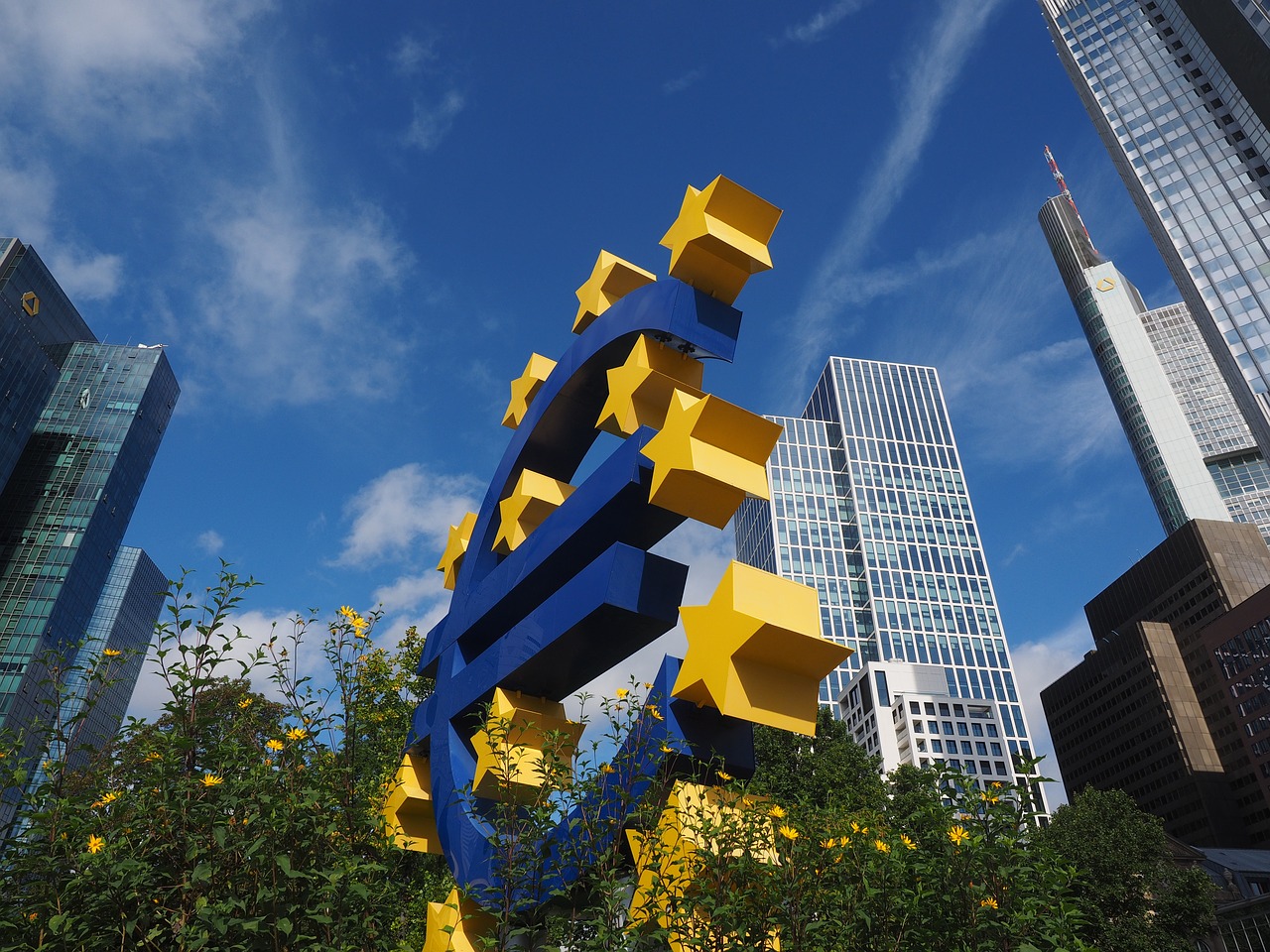

This is part of our special feature on The Crisis of European Integration.
The economics profession has long had a complicated relationship with European Economic and Monetary Union (EMU). The 1990s consensus among (particularly US-trained economists) was that the euro “can’t happen,” was a “bad idea,” and “won’t last.”[1] Milton Friedman warned that the project would “exacerbate political tensions” by forcing political actors – rather than exchange rates – to resolve cross-national economic differences.[2] Looking at eurozone developments since, economists remain somewhat bemused.[3] Silvia Ardagna and Francesco Caselli, making a relatively rare intervention on eurozone policy in an American Economics Association (AEA) journal, argue that Greece’s bailouts were “likely not on the Pareto frontier” and broadly “suboptimal.”[4] That is, the agreements reached between Greece and its creditors were not economically efficient.
From a mainstream economics perspective, much of European economic decision-making has the same problem: it just doesn’t make economic sense.[5] This confusion stems from the fact that economic policymaking in the eurozone is constrained by politics, history, and the unique structure of European governance institutions. Recognizing economists’ lack of knowledge concerning the broader European context, the AEA’s interdisciplinary journal, the Journal of Economic Perspectives (JEP), felt the need to publish a remedial piece entitled, “What is European Integration Really About? A Political Guide for Economists.”[6]
However, economists’ blindness to the exigencies of European integration is only one obstacle to the improvement of European economic policy. European policymakers have relied too much on “mainstream” economic analysis in the design and re-design of eurozone governance structures. This leaves them exposed to economists’ other blind spots – especially concerning the macroeconomic problems posed by financial integration. In contrast, policymakers are relatively deaf to the advice of heterodox economists and political economists – meaning that there are few empowered participants who have a strong grasp of both economic relationships and the region’s political idiosyncrasies. The result has been, arguably, rather dumb policymaking.
This brief article is structured in four parts. The first provides a brief summary of the crisis and response so far. The second and third explore the economic and political-economic perspectives on EMU and the crisis, before concluding by arguing that more synergistic use of ideas and platforms would improve the quality of debate concerning European macroeconomic governance.
A Brief Recap of the Crisis in Europe
The eurozone crisis is fundamentally a balance of payments crisis. Following the adoption of the euro, peripheral eurozone economies found it much easier to sell their financial assets abroad, importing capital to finance larger current account deficits. This was desirable to the periphery because they gained access to relatively cheap capital – capital that funded government spending and household borrowing in Greece, real estate projects in Ireland, and infrastructure and real estate investment in Spain.[7] The result across the periphery was a period of inflationary growth that lasted most of the 2000s. The arrangement was also beneficial to the countries of the core, which could invest in the periphery and earn higher returns than were available at home. For a while, this worked to the benefit of both sides.
Once the crisis began, however, the economies of the periphery found themselves in a vulnerable position. Banks, firms, and governments were unable to continue borrowing as capital inflows suddenly stopped. Without those inflows, those countries’ exports were insufficient to fund their foreign spending. In the most extreme cases (Greece, Ireland, Portugal, Cyprus), official lenders had to replace private capital flows (i.e., with national bailouts).
The European response to the crisis has broadly aimed at reducing peripheral countries’ need to borrow in the first place – either through restoring export competitiveness or preventing the excessive accumulation of government debt. Between the conditions attached to bailouts, the “Six-Pack” and “Two-Pack” legislative reforms, and the Fiscal Compact treaty, austerity has emerged as Europe’s primary strategy for dealing with the crisis. The thinking goes that fiscal retrenchment drives down prices (helping competitiveness) as well as limiting government borrowing (as spending falls and tax receipts rise).[8]
From this perspective, volatile capital flows have been treated as a symptom of government overspending and structurally deficient industry – rather than a deeper problem built into EMU. Where financial reforms have taken place – such as the formation of European Banking Union and the adoption of stricter capital adequacy standards – the policy goal has been to improve the stability of banks when exposed to crises, not to address the macroeconomic impact of intra-eurozone financial flows.
The Economist’s View of Europe
Much of mainstream (macro)economics tends to treat the financial sector as an invisible and frictionless mechanism for turning savings into investment (or future consumption into present consumption). This assumption of benign efficiency left the economic architects of the eurozone flying blind when it came to the potential risks posed by financial integration: They were aware of the dangers of excessive sovereign borrowing, so European policymakers wrote rules meant to keep deficits and debts under control. They were also keenly aware of their inflation risks, resulting in the ECB’s strictly limited mandate. However, few economists believed that forging a new transnational financial market would introduce macroeconomic volatility concerns beyond simple concerns over banking stability.
Economists’ discomfort with both European politics and real-world financial systems may help explain why the crisis has not featured prominently in mainstream Economics journals. While outlets like the Review of International Political Economy or New Political Economy have published extensively on the causes and competing solutions to Europe’s predicament, the AEA’s flagship journals – aside from JEP – and other leading outlets within the discipline, such as The Quarterly Journal of Economics (QJE), have been relatively silent. Even the Journal of the European Economic Association has offered only a handful of relevant works over the last decade. Looking at the few pieces that do attack the subject, the general dearth of analysis appears rooted in methodological limitations: it is very difficult to realistically model the European economy – especially where finance is concerned – using economists’ favored approaches.
Dynamic stochastic general equilibrium (DSGE) models constitute the bulk of contemporary mainstream macroeconomics. These sophisticated mathematical models effectively transform macroeconomics from an inductive to a deductive science, aggregating the decisions of simulated actors, each of whom act rationally across many markets. Rather than reverse-engineering macroeconomic rules of thumb from observation, DSGE models are based on “microfoundations:” stylized assumptions about how firms and individuals behave. The problem is that DSGE models can only incorporate so much detail: rational behavior and complete markets are generally assumed, actors are broadly homogenous, and most DSGE models (including virtually all pre-2007 models) exclude financial markets entirely.
This is not to say that mainstream economists have been completely absent from the crisis discussion. Galina Hale and Maurice Obstfeld offer an excellent account of the structure of intra-eurozone financial flows – essentially casting the EMU “core” countries as intermediaries with a comparative advantage in turning global capital into lending in the eurozone periphery.[9] But while their piece provides a key insight, they do not explain how this dynamic contributed to the subsequent crisis – nor why that crisis emerged in some peripheral economies but not others. In other words, these sorts of studies are good at revealing what is happening but bad at telling us what it all means – or how conditions feed back into political decision-making. Philippe Martin and Thomas Philippon, concluding their valiant attempt to use a DSGE model to distinguish between different drivers of the eurozone crisis, ultimately concede that “the weakness of our analysis is that we are forced to treat some deep issues rather superficially. In our view, political economy issues… deserve a much deeper analysis.”[10]
In short, mainstream economics (particularly macroeconomics) lacks the tools for the sort of holistic and context-sensitive analysis that is required in order to understand where the crisis came from and how best to combat it. Moreover, the legacy of assuming away the financial sector as irrelevant or efficient makes it very hard for economists to see how financial flows could possibly generate inefficient or destructive outcomes.
Of course, this summary is admittedly stylized. Economic subfields such as financial economics and international monetary economics, smaller corners of academia still broadly within the mainstream, have engaged directly with Europe: the Journal of International Money and Finance is a particular leader in terms of eurozone discussion.[11] Further afield, those who view the financial sector as a problematic source of economic shocks tend to be characterized as “heterodox” scholars and confined to their own academic communities. These economists are more in the mold of Hyman Minsky[12] than Eugene Fama.[13] Likewise, many of the shrewdest economic observers of the crisis in Europe are associated with the Institute for New Economic Thinking (INET), an explicitly heterodox endeavor.
The Political Economy Approach
When looking at the eurozone crisis, political economy offers three major advantages over a purely economic perspective: a systemic understanding that cross-border financial flows affect domestic political economies, an acceptance of capitalist diversity, and a sensitivity to relative gains concerns and non-material drivers of behavior – which are generally ignored within economics.
Like many heterodox economists, political economists have put financial markets and capital flows at the center of their discipline. Indeed, the reemergence of global finance after the Second World War essentially led to the founding of International Political Economy as a discipline.[14] As capital crosses borders, it allows shocks to travel from one country to another, eliminates or constrains policy options, and generally forces states to compete with each other for access to global funds.[15] So while economists have largely downplayed the role of financial drivers of macroeconomic outcomes, political economy scholars maintain that financial interconnectedness plays a crucial role in determining how entire economic systems perform and evolve.
Applying these ideas to the eurozone crisis, it seems clear that any viable solution to the crisis must stabilize cross-border financial flows. Unfortunately, the solutions pursued thus far do little to achieve this. After the crisis began, economists and policymakers tended to treat the crisis as either a problem of fiscal incontinence or falling competitiveness. These were two problems they understood and had solutions for: austerity and structural reforms.[16] At the same time, these reforms do not directly address the sorts of sudden capital flow reversals that struck each of the bailout-affected countries. That goal would be best-served through the creation of a common European bond. There is agreement on this point across a broad spectrum of both economists and political economists – though there are innumerable challenges in bringing such a proposal to fruition.[17]
A second difference between economists and political economists is that the latter are more comfortable with the notion that capitalism manifests in different ways, even following different causal rules depending on institutional context. Indeed, the tension between the homogenizing force of financial globalization and divergent pressures produced by stubborn institutional and ideational differences is one of the more prominent themes in political economy. In contrast, economics tends to posit that a single causal logic should work in both Kansas and Kenya; to a mainstream economist, there are no true varieties of capitalism
This view becomes problematic when it blinds them to the reality that EMU is a union of fundamentally different political economies. An emerging line of thinking in comparative political economy holds that countries tend to pursue distinct growth strategies, depending on their institutional advantages – for instance, export-led growth, FDI-driven growth, or debt-and-consumption-driven growth.[18] To a political economist, it is natural to wonder whether these distinct systems might interact with each other in a suboptimal fashion.[19] This is a deeper concern than what is reflected in the relatively simple economic criteria set out in Maastricht. For instance, converging interest rates could (and did) mask the dangerous divergence of financial account balances as capital flowed from core to periphery. Economies superficially looked more similar even as they were becoming more asymmetrically codependent.
As Martin and Philippon concede, an understanding of the eurozone crisis requires a deeper understanding of diverse European political economies. Because economists were poorly equipped to recognize the depth of intra-eurozone diversity, the immediate reaction to the crisis was based on the notion that countries like Germany should be emulated. This makes sense if there is one Pareto-superior constellation of economic policies – it makes less sense if there are multiple desirable equilibria available. Moreover, Germany’s past success has been partly predicated on the existence of intra-EMU diversity: that is, it helps Germany to share the bloc with investment or consumption-driven economies. As Martin Wolf has repeatedly pointed out, it is neither possible nor wise for all European economies to pursue the same strategies as the Germans.[20]
Finally, political economists are far more sensitive to the forces that continue to derail efforts to decisively put the crisis to bed. Where economists analyze policy in terms of material benefit, real-world politicians are not so simple: many are driven by ideology or the pursuit of national prestige, for example. One could credibly argue that, had Germany agreed to backstop Greek debt in 2009, the welfare impact of the crisis would have been less severe – at little to no extra cost to the Germans, even when considering the moral hazard implications.
In reality, such an approach is a political non-starter. For one thing, it flies in the face of Germanic discomfort with debt; for another, it presents relative gains concerns: The argument from core economies is that the periphery benefitted from irresponsible “fast and loose” spending on “liquor and women.”[21] According to this line of thought, Greeks lived the high life on borrowed core capital and must now repay their debts – even if doing so is economically devastating to Greece and damaging to the bloc as a whole. The current policy trajectory is not just driven by the selective application of economic logic – it is also fundamentally driven by adherence to a very specific notion of fairness.
Finding Comparative Advantages
As much as EMU has been described as a political rather than economic project, it would be a mistake to ignore the impact that economic thinking (and economists themselves) have had on the formation and regulation of the currency union. Economists’ blind spots are reflected in how EMU was constituted: the inattention to the need to supervise cross-border capital flows and the relatively simplistic approach to “convergence” helped lay the foundation for the crisis – and has hampered crisis response measures. At the same time, the crisis cannot be understood without a solid grasp of economic cause and effect – nor are we likely to finally end the crisis so long as response measures remain economically illiterate. In short, politicians must be convinced to act in economically sensible ways; though that economic sensibility must be tempered with the insights that political economy can provide.
Economists can tell us why capital began flowing from the core to periphery in the first place. They give us narrow-focus insight into how those flows will affect domestic economic actors and some means of quantifying and comparing the impact of specific policies. However, economists cannot provide the big picture analysis needed to fully conceptualize the crisis, its causes, and its solutions. That big picture analysis requires a more structural appreciation of capital flows, an awareness of capitalist variety, and an ability to explain and accommodate economically dubious political decision-making.
The political economist’s privileged view, however, can be frustrating: while they may be best-positioned to explain what is happening, they generally exert very little influence over the policy debate. By comparison, economists possess far bigger platforms from which to influence policy – not least through their dominance of central banks and finance ministries. Those policy-relevant bodies of economists would be greatly enhanced by expanding to include members from the ranks of both political economists and the economically heterodox. Economists – and European policymakers – need more political economy in their lives.
Gregory Fuller is Assistant Professor of International Political Economy in the Department of International Relations and International Organization at the University of Groningen in the Netherlands. His research focuses on European macroeconomic governance, international capital flows, and comparative housing finance. His latest article, “Exporting Assets: EMU and the Financial Drivers of European Macroeconomic Imbalances,” is now available open-access from New Political Economy.
Photo: Euro sculpture, Pixabay
References:
[1] Lars Jonung and Eoin Drea, “The Euro: It Can’t Happen. It’s a Bad Idea. It Won’t Last. US Economists on the EMU, 1989-2002,” Economic Papers (European Commission, 2009), http://ec.europa.eu/economy_finance/publications/publication16345_en.pdf.
[2] Milton Friedman, “Why Europe Can’t Afford the Euro,” The Times, November 19, 1997.
[3] Philip R Lane, “The European Sovereign Debt Crisis,” Journal of Economic Perspectives 26, no. 3 (August 2012): 49–68, doi:10.1257/jep.26.3.49.
[4] Silvia Ardagna and Francesco Caselli, “The Political Economy of the Greek Debt Crisis: A Tale of Two Bailouts,” American Economic Journal: Macroeconomics 6, no. 4 (October 2014): 291–323, doi:10.1257/mac.6.4.291.
[5] Kevin H O’Rourke and Alan M Taylor, “Cross of Euros,” Journal of Economic Perspectives 27, no. 3 (August 2013): 167–92, doi:10.1257/jep.27.3.167; Christian Thimann, “The Microeconomic Dimensions of the Eurozone Crisis and Why European Politics Cannot Solve Them,” Journal of Economic Perspectives 29, no. 3 (August 2015): 141–64, doi:10.1257/jep.29.3.141.
[6] Enrico Spolaore, “What Is European Integration Really About? A Political Guide for Economists,” Journal of Economic Perspectives 27, no. 3 (August 2013): 125–44, doi:10.1257/jep.27.3.125.
[7] Gregory W. Fuller and Erik Jones, “Europe and the Global Economic Crisis,” in Europe Today: A Twenty-First Century Introduction, ed. Ronald Tiersky and Erik Jones, Fifth edition, Europe Today (Lanham, Maryland: Rowman & Littlefield, 2015), 343–67.
[8] Gregory W. Fuller and Erik Jones, “European Macroeconomic Governance,” in European Union: Power and Policymaking, ed. Jeremy Richardson, 4th ed. (Routledge, 2015).
[9] Galina Hale and Maurice Obstfeld, “The Euro and the Geography of International Debt Flows,” Journal of the European Economic Association 14, no. 1 (February 2016): 115–44, doi:10.1111/jeea.12160.
[10] Philippe Martin and Thomas Philippon, “Inspecting the Mechanism: Leverage and the Great Recession in the Eurozone,” American Economic Review 107, no. 7 (July 2017): 1904–37, doi:10.1257/aer.20150630.
[11] Robert Unger, “Asymmetric Credit Growth and Current Account Imbalances in the Euro Area,” Journal of International Money and Finance, February 2017, doi:10.1016/j.jimonfin.2017.02.017.
[12] Hyman P. Minsky, Stabilizing an Unstable Economy (New Haven: Yale University Press, 1986).
[13] Eugene F. Fama, “Efficient Capital Markets: A Review of Theory and Empirical Work,” The Journal of Finance 25, no. 2 (May 1970): 383–417.
[14] Benjamin Cohen, “The IPE of Money Revisited,” Review of International Political Economy 24, no. 4 (July 4, 2017): 657–80, doi:10.1080/09692290.2016.1259119.
[15] Richard N. Cooper, The Economics of Interdependence: Economic Policy in the Atlantic Community, 2nd? (New York: Columbia University Press for the Council on Foreign Relations, 1980), http://www.worldcat.org/title/economics-of-interdependence-economic-policy-in-the-atlantic-community/oclc/797541048?referer=br&ht=edition; Philip G. Cerny, Georg Menz, and Susanne Soederberg, “Different Roads to Globalization: Neoliberalism, the Competition State, and Politics in a More Open World,” in Internalizing Globalization: The Rise of Neoliberalism and the Decline of National Varieties of Capitalism, ed. Susanne Soederberg, Georg Menz, and Philip G. Cerny (New York: Palgrave Macmillan, 2005), 1–32, http://www.palgrave.com/page/detail/internalizing-globalization-susanne-soederberg/?K=9780230524439.
[16] Charles Wyplosz, “The Eurozone Crisis and the Competitiveness Legend,” Asian Economic Papers 12, no. 3 (October 2013): 63–81, doi:10.1162/ASEP_a_00238.
[17] Jacques Delpla and Jakob von Weiszäcker, “The Blue Bond Proposal,” Bruegel Policy Brief (Bruegel, May 2010), https://ideas.repec.org/p/bre/polbrf/403.html; Erik Jones, “Eurobonds, Flight to Quality, and TARGET2 Imbalances,” European Policy Analysis (Swedish Institute for European Policy Studies, April 2012), http://www.sieps.se/sites/default/files/2012_4epa%20EN_A4.pdf; Markus K. Brunnermeier et al., “ESBies: Safety in the Tranches,” Working Paper (European Systemic Risk Board, September 2016).
[18] Lucio Baccaro and Jonas Pontusson, “Rethinking Comparative Political Economy: The Growth Model Perspective,” Politics & Society 44, no. 2 (June 2016): 175–207, doi:10.1177/0032329216638053.
[19] Alison Johnston and Aidan Regan, “Introduction: Is the European Union Capable of Integrating Diverse Models of Capitalism?,” New Political Economy, September 5, 2017, 1–15, doi:10.1080/13563467.2017.1370442.
[20] Martin Wolf, “Germany Is a Weight on the World,” Financial Times, November 3, 2013, https://www.ft.com/content/291a5ca6-42ec-11e3-8350-00144feabdc0.
[21] Mark Rutte and Jan Kees de Jager, “Expulsion from the Eurozone Has to Be the Final Penalty,” Financial Times, September 7, 2011, https://www.ft.com/content/5284d4a4-d93a-11e0-884e-00144feabdc0; Maïa de La Baume, “Calls for Dijsselbloem to Quit Eurogroup over ‘stupid Jokes,’” POLITICO, March 22, 2017, http://www.politico.eu/article/calls-for-dijsselbloem-to-quit-as-eurogroup-chief-over-stupid-jokes/.
Published on November 2, 2017.




